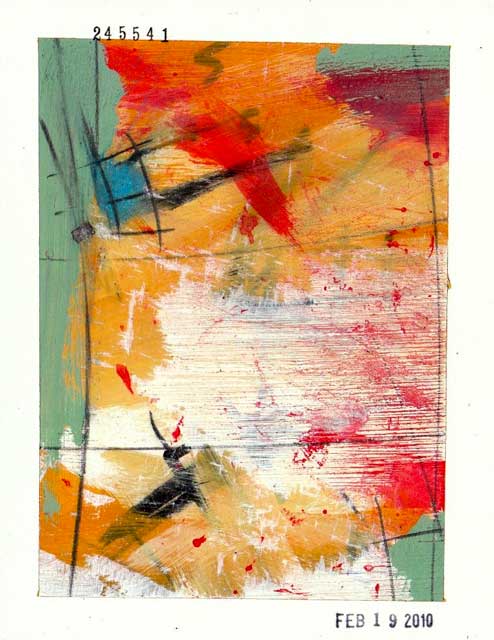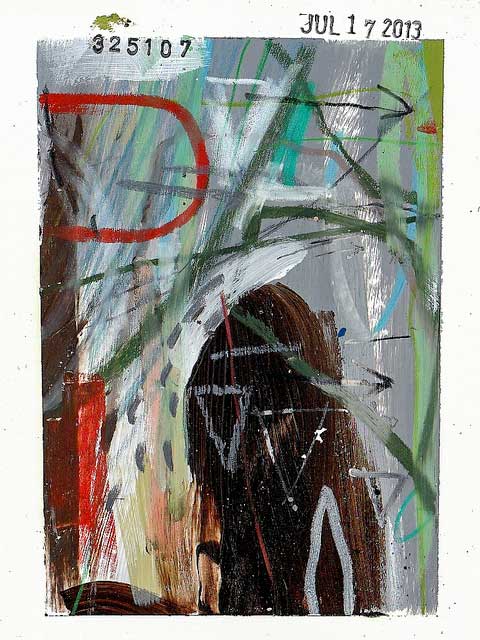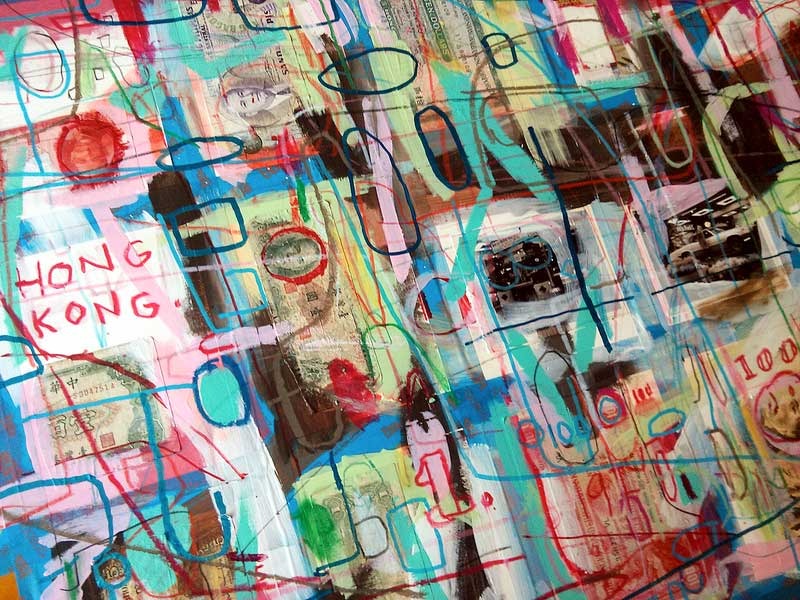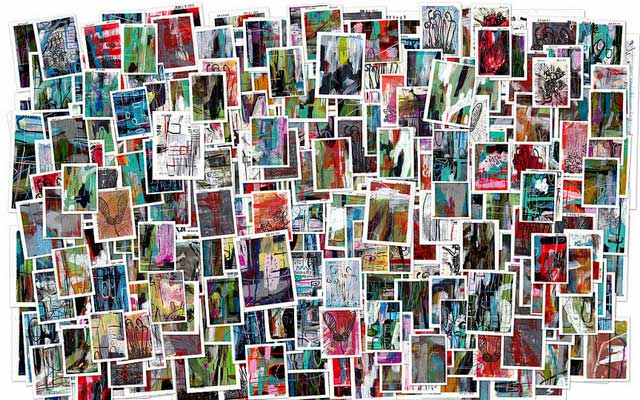The intent wasn’t always to create a million paintings. Speaking of his early art-making days with his brothers-in-arms back in high school, where the seeds of the idea were planted, artist Jason McHenry says, “We actually just used them like currency, kind of. We would make little mini paintings. That’s how it started… just amassing a bunch of these things, you know? We would all just push each other to make a new version of our own currency — like one dollar bills and five dollar bills.”
McHenry and his best friend Chris Dyer are the only two that stuck to it over the years. Now the project has a name, One Thousand Thousand, and a mission to produce one million paintings. Although the impetus was simply to make as much art as possible surrounded by his friends, it eventually took McHenry down an often solitary path. Today he is reaching out to other artists to participate in the project to assure the goal is reached in his lifetime.
“One Thousand Thousand is Christopher Dyer and Jason McHenry,” McHenry is quick to point out. “I honestly do more of the work, produce more pieces; he’s a senior executive at a company in Denver. We’re like partners in crime artistically. All the big projects that we’ve done, we’ve done together. So we push each other that way.”

McHenry, 43, and his wife, Cathy, live in the South Bay now. He was born and raised in St. Louis, MO. His formative years are as colorful as the art he began painting just a short time later. Describing his youth, McHenry says, “I was the worst. I was raised by bikers. My whole family was involved with porn and tattoos.”
Like many kids growing up around a family-owned business, McHenry was asked to pitch in and help out from time to time. He earned his allowance by way of a broom and a bucket of bleach. He swept the floors of the family’s adult business and soaked clean the quarters he picked up in his bucket over night. The next day he’d dry them off and head to the arcade to play Pacman.

McHenry went to four different high schools in the 9th grade. He kept getting kicked out of them. They finally decided to have him tested and realized there wasn’t anything wrong with him; the tests revealed that he was both highly intelligent and exceptionally creative. As a result, he was sent to Central Visual and Performing Arts High, a magnet school in the St. Louis Public School district, which describes itself as being “focused on synergistically developing both the artistic and academic student.”



